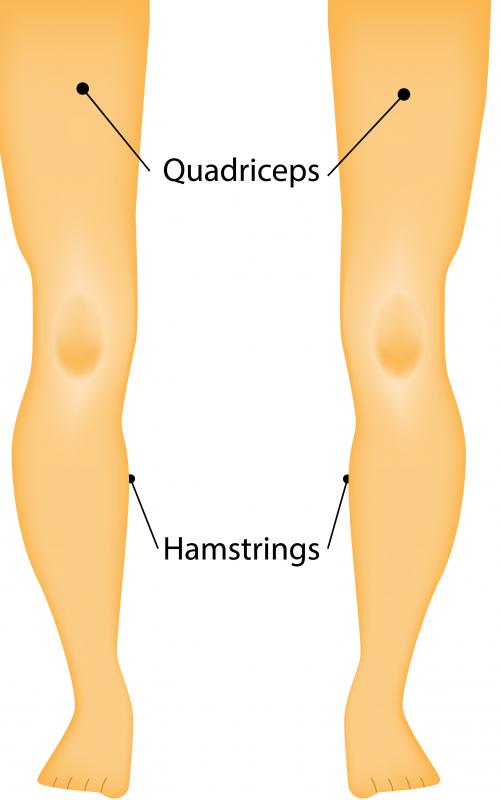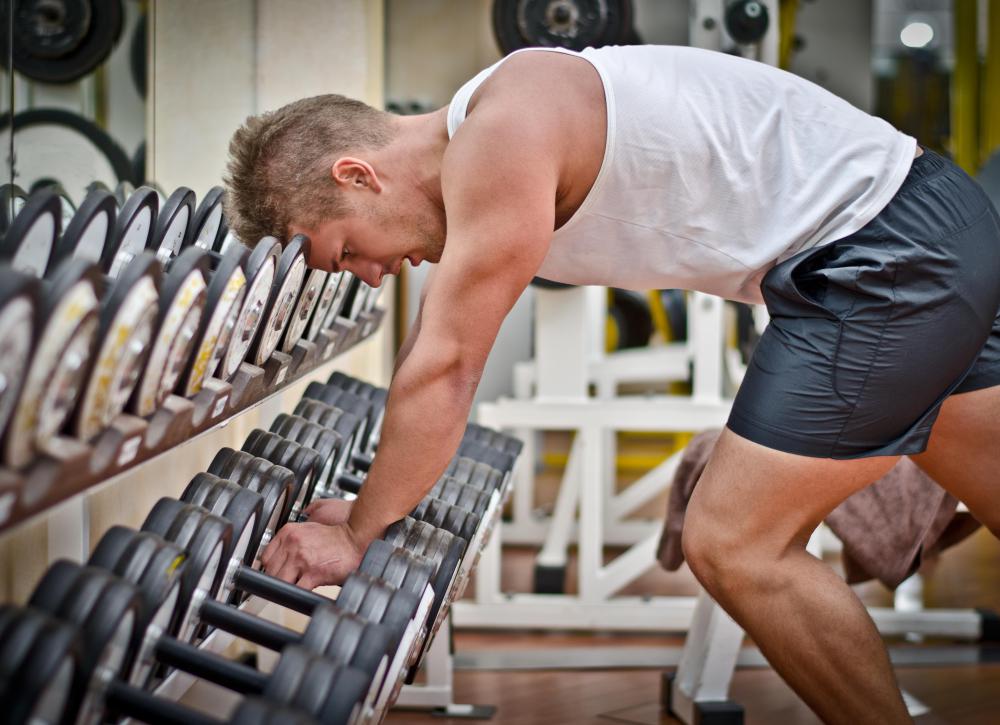At WiseGEEK, we're committed to delivering accurate, trustworthy information. Our expert-authored content is rigorously fact-checked and sourced from credible authorities. Discover how we uphold the highest standards in providing you with reliable knowledge.
What is a Kettlebell Squat?
A kettlebell squat is an exercise that involves bending the legs and bringing down the upper body until it is in a squatting position, while holding one or two kettlebells in the hands for extra resistance. A kettlebell is a weight with handles for easy gripping that resembles a bowling ball. Although traditional squats are performed using barbells or dumbbells, the handle on a kettlebell makes it easier to grip and increases the ability to squat using more weight. Squatting with kettlebells makes more positions possible to allow concentrations on different aspects of the muscles involved.
Squats primarily exercise the gluteus maximus, quadriceps, and hamstrings. Depending on variation in position, other muscle groups may be engaged, including back muscles and abdominals for stabilization, and forearm muscles for gripping. In some overhead moves, the shoulders do a lot of work. Since gripping a kettlebell allows for more mobility than holding a barbell, the spine is in a more natural position and makes it easier to use correct form during the squat. Using kettlebells also lessens pressure on the knees.

A basic kettlebell squat is performed starting from a standing position with a kettlebell in each hand or both hands gripping a single kettlebell. Keeping the head facing straight forward, the exerciser should sit back as if sitting in a chair until the upper thighs are parallel with the floor. The knees should never move past the toes, most of the body weight should be over the heels, and the back should stay straight and as vertical as possible. Using a fluid motion and controlled movements, the exerciser should return to the starting position.

There are dozens of variations on the kettlebell squat. The most basic variations involve altering foot positions and widening or narrowing the stance to change concentration of the movement to different aspects of the hip and leg muscles. Some variations engage the upper body to make the kettlebell squat a whole body movement.
The kettlebell swing is a fluid motion that starts with a squat and progresses into swinging the weight in front of the body to about shoulder level, using a forward hip thrust to power the movement. Another squat exercise is the kettlebell clean. Starting from a squat position with the kettlebell between and slightly behind the feet, the participant jerks the weight up in a snapping motion and rests it by the shoulder. From a kettlebell clean motion, the exerciser may progress to a kettlebell snatch by extending the swing exercise by swinging the kettlebell up over the head to a straight-arm position. This variation on a kettlebell squat strengthens the core, arms and shoulders as well as legs.
AS FEATURED ON:
AS FEATURED ON:














Discuss this Article
Post your comments